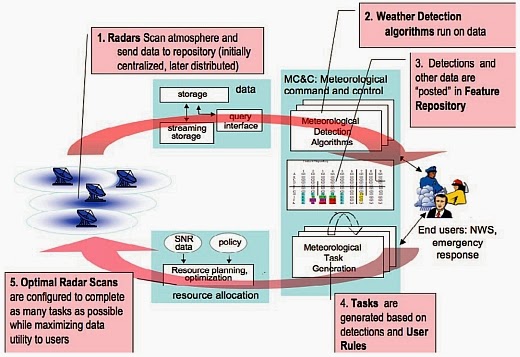A. Battaglia1, C. D. Westbrook2, S. Kneifel3, P. Kollias3, N. Humpage1, U. Löhnert4, J. Tyynelä5, and G. W. Petty6
- 1Department of Physics and Astronomy, University of Leicester, University Road, Leicester, UK
- 2Department of Meteorology, University of Reading, Reading, UK
- 3McGill University, Montreal, Canada
- 4Institut für Geophysik und Meteorologie, University of Cologne, Cologne, Germany
- 5Department of Physics, University of Helsinki, Helsinki, Finland
- 6University of Wisconsin-Madison, Madison, Wisconsin, USA
Abstract. Clouds and associated precipitation are the largest source of uncertainty in current weather and future climate simulations. Observations of the microphysical, dynamical and radiative processes that act at cloud scales are needed to improve our understanding of clouds. The rapid expansion of ground-based super-sites and the availability of continuous profiling and scanning multi-frequency radar observations at 35 and 94 GHz have significantly improved our ability to probe the internal structure of clouds in high temporal-spatial resolution, and to retrieve quantitative cloud and precipitation properties. However, there are still gaps in our ability to probe clouds due to large uncertainties in the retrievals.
The present work discusses the potential of G band (frequency between 110 and 300 GHz) Doppler radars in combination with lower frequencies to further improve the retrievals of microphysical properties. Our results show that, thanks to a larger dynamic range in dual-wavelength reflectivity, dual-wavelength attenuation and dual-wavelength Doppler velocity (with respect to a Rayleigh reference), the inclusion of frequencies in the G band can significantly improve current profiling capabilities in three key areas: boundary layer clouds, cirrus and mid-level ice clouds, and precipitating snow.
Citation: Battaglia, A., Westbrook, C. D., Kneifel, S., Kollias, P., Humpage, N., Löhnert, U., Tyynelä, J., and Petty, G. W.: G band atmospheric radars: new frontiers in cloud physics, Atmos. Meas. Tech., 7, 1527-1546, doi:10.5194/amt-7-1527-2014, 2014.

 Flow diagram depicting the major processing steps of the closed-loop software architecture
Flow diagram depicting the major processing steps of the closed-loop software architecture